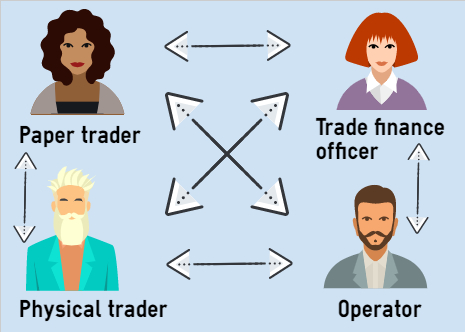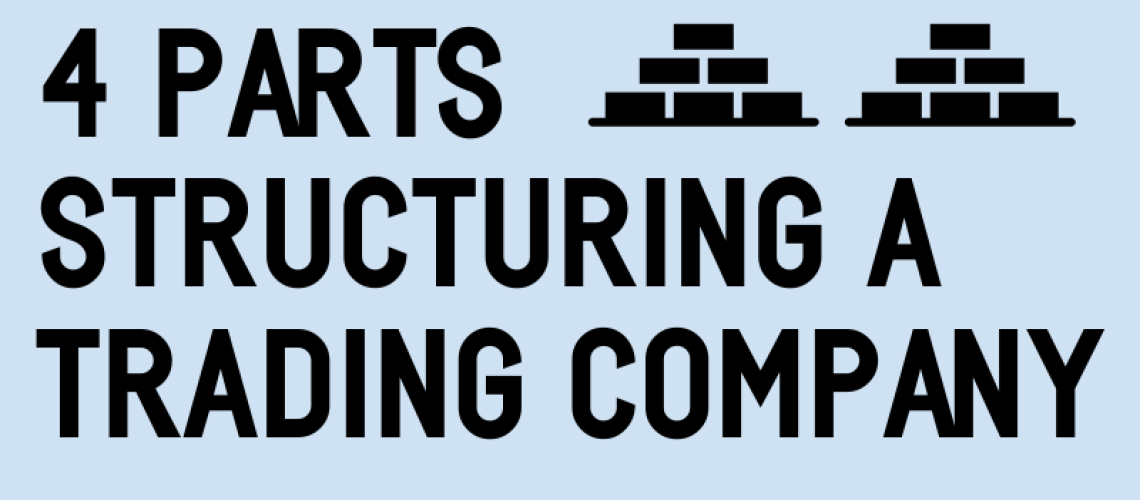The other day I received an email and the person asked to know EVERYTHING related to physical commodity trading. I replied something like “Sure, I’ll be happy to answer your SPECIFIC questions” since the field of commodity trading is soooo vast. It’s hard to give any substantial answer to that kind of question.
But it made me think! How can we break down the activity? How would I explain the internal mechanism of a trading house to someone with 0 knowledge? Not an easy task!
In this short post, I did my best to introduce the four main parts structuring a trading company. Please bear in mind it’s not as easy to cut a clear line between each activity as they are all deeply interconnected.

PHYSICAL COMMODITY TRADING
Here we buy and sell the physical commodities. The buy side is often called origination and the sales side merchant. Only in the biggest companies the originators and the merchants are not the same people, usually the same trader buys and sells, this is even much truer in commodities with no future contract to hedge.
They are the contact point with the producer/client and the trading company. They spend their time visiting the different counterparties, setting up deals, calling to get quotes and intel about the move of the different market players.
PAPER COMMODITY TRADING
This is the part that drives people crazy! When we speak about traders, everyone always imagines a dude behind 10 screens and hundred of charts. A trader in charge of paper trading in a commodity house will mostly hedge purchases from the origination or price the sales for the merchant. Most of the trading house has a specific team or person in charge of the futures.
They will not travel as per the guys on the physical side, their job is more in-office. They converse with the brokers, oversee the Supply and Demand models, update the pricing matrix for the physical side and a lot of other advanced math stuff.
LOGISTIC
Here is the core part, knowing how to move commodities from one place to another cost-efficiently is an art. Navigating through the different customs with the right paperwork is not as easy as it sounds! The logistic department is also called contract execution, which could be quite confusing at first, but very true when you understand the whole mechanic. The person in charge of the contract execution ( or operator) becomes the centre of the information. They nominate inspector, book trucks, containers, in charge of quality, liaise with the suppliers and the clients, etc…
Being an operator is a tough job. You need to be as details oriented as proactive since mistakes are costly! From my point of view, I would never hire a trader in charge of the physical commodities without an execution experience. It’s too important!
If you haven’t you can check here a longer blog post about the operator
TRADE FINANCE
Trade finance is a big part where I categorize everything that has a relation with the banking system. They are the interface between the banks and the trading company. Usually here in Geneva, they are the only one wearing a suit in the office :-). A good trade officer will immediately know which banks would be the more suitable to fund which type of cargos in function of the origin and destination of the trade.
Part of their job is negotiating credit line, cash flow prevision, negotiate the L/C pricing, having dispendious lunch with bankers.
——————————————————————————————————————————————————
Hope this sheds some light !

